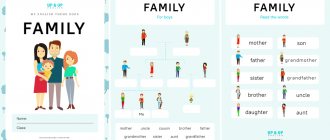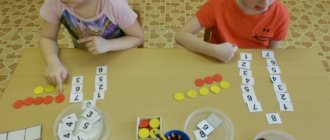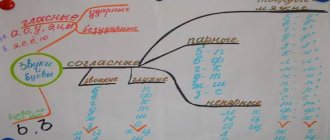Trainer “Vowels and consonants”. Vowels and consonants Start. - presentation
Trainer “Vowels and consonants”
Vowels and consonants Start
1. Find a picture in the title whose first sound is a vowel.
2. Find a picture in the title whose first sound is a consonant.
3. How can you name the pictures in one word? Choose only those birds whose names begin with a vowel sound.
4. How can you name the pictures in one word? Choose only those animals whose names end with a vowel sound.
5. In which series do all words begin with a consonant sound? 12)
5. In which series do all words begin with a consonant sound? 12)
5. In which series do all words begin with a consonant sound? 12)
6. Find the extra picture
7. Find the extra picture
1. How can you name all objects in one word? The children were given the task to choose those instruments in the name of which the first consonant sound is hard. Who completed the task correctly?
2. In which row in the title of each picture is the last sound a soft consonant? 12)
2. In which row in the title of each picture is the last sound a soft consonant? 12)
2. In which row in the title of each picture is the last sound a soft consonant? 12)
3. Which gardener plants berries whose names begin with a soft consonant?
4. In which row in the title of each picture is the last sound a hard consonant? 12)
4. In which row in the title of each picture is the last sound a hard consonant? 12)
4. In which row in the title of each picture is the last sound a hard consonant? 12)
5. Find the extra picture
6. Find the extra picture
Voiced and voiceless consonants Educational task Educational task Exercise
1. How can you name objects in one word? In the name of which object is the first sound a voiced consonant?
2. Which vase contains flowers whose names begin with a voiced consonant?
3. In which row do all words begin with a voiceless consonant? 12)
3. In which row do all words begin with a voiceless consonant? 12)
3. In which row do all words begin with a voiceless consonant? 12)
4. How can you name objects in one word? Choose those objects whose names begin with a voiced consonant.
5. Find the extra picture
6. Find the extra picture
Final test (vowels and consonants) Option 1 Option 1 Option 2 Option 2
1. In which row in the title of each picture is the first consonant sound? 12)
1. In which row in the title of each picture is the first consonant sound? 12)
1. In which row in the title of each picture is the first consonant sound? 12)
2. In which row in the title of each picture is the last vowel sound? 12)
2. In which row in the title of each picture is the last vowel sound? 12)
2. In which row in the title of each picture is the last vowel sound? 12)
3. In which zoo do animals live whose first sound is a soft consonant?
4. Find the extra picture (pay attention to the sonority and dullness of the first sounds)
5. Find a picture that begins with a hard voiced consonant
1. In which row in the title of each picture is the first vowel sound? 12)
1. In which row in the title of each picture is the first vowel sound? 12)
1. In which row in the title of each picture is the first vowel sound? 12)
2. In which row in the title of each picture is the last consonant sound? 12)
2. In which row in the title of each picture is the last consonant sound? 12)
2. In which row in the title of each picture is the last consonant sound? 12)
3. Find the extra picture (pay attention to the hardness and softness of the first sounds)
4. Choose a basket containing vegetables whose first sound is a voiceless consonant.
5. Find a picture that begins with a soft voiced consonant
6. Find a picture that begins with a hard voiceless consonant
Training tasks (hard and soft consonants) Task 1 Task 1 Task 2 Task 2
Vowel sounds
People often make mistakes when writing vowels in a word, using the principle “what I hear is what I write.” For others, on the contrary, it seems that there may be a catch in the word, and in place of the audible A there should definitely be an O. In most cases, the letter can be checked in a simple way.
Main types
Regular and iotated, stressed and unstressed are options for the groups into which vowel sounds are divided. If the first of the first group (A, I, O, U, Y, E) have one sound each, then the second (E, E, Yu, Ya) have two: YE, YO, YU, YA. Double sound appears in the following cases:
- the letter comes after another vowel (unclear, hiring, moving, interpreting);
- the letter comes after b or b (sommelier, beast, pour, pig);
- the letter is at the beginning of the word (European, capacious, yurt, barley).
The letter I can also become iotated when it comes after a soft sign (boyish, frogish, weasel).
Another group is stressed and unstressed sounds. To determine the stressed letter, listen to which syllable becomes “upper,” that is, which is highlighted by intonation when pronouncing a word. There are as many vowels in a word as there are syllables, and this rule works vice versa. The breakdown when hyphenating a word does not always coincide with the way words are divided into syllables, so you need to be careful when parsing phonetically.
Verification method
Vowels are clearly heard if they are stressed. In a position called unstressed, some vowels may differ, for example, in the word “pinch” the vowel I sounds like E. To determine which letter needs to be placed, test words are used. For the word “pinch” the test word is “pinch”. In the stressed position, the letter is heard clearly. Examples: tremble - trembling, pink - pink, humble - humble. In some cases there is no test word, as in the words “vinaigrette”, “February”. These words need to be remembered.
Vowel letters of the Russian alphabet for preschoolers
The formation of vowel sounds, their difference from consonants, weak and strong positions of vowel sounds, stressed and unstressed vowel sounds and their designation by letters, syllable formation, vowel spellings. Your child is getting acquainted with the alphabet for the first time, and many children find it difficult to understand and distinguish where the consonant is and where the vowel is. The child must understand one thing: vowel sounds are melodious, baked, and are indicated in the text in red. It is better to introduce a child to these concepts in a playful way.
There are 10 vowel letters in the Russian language: A-Ya, O-Yo, U-Yu, Y-I, E-E and all
6 vowel sounds: [A], [O], [U], [Y], [E], [I].
When pronouncing vowels, exhaled air freely exits through the larynx and oral cavity between the vocal cords and does not encounter obstacles. Vowel sounds consist of voice in the complete absence of noise. Consonant sounds differ from vowels in that when consonants are formed, air encounters an obstacle in the oral cavity, creating noise. Consonants consist of voice and noise (voiced) or only noise (voiceless).
Teaching children letters and syllables. Reading for children 3,4,5 years old





